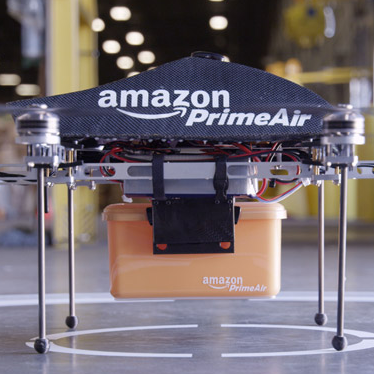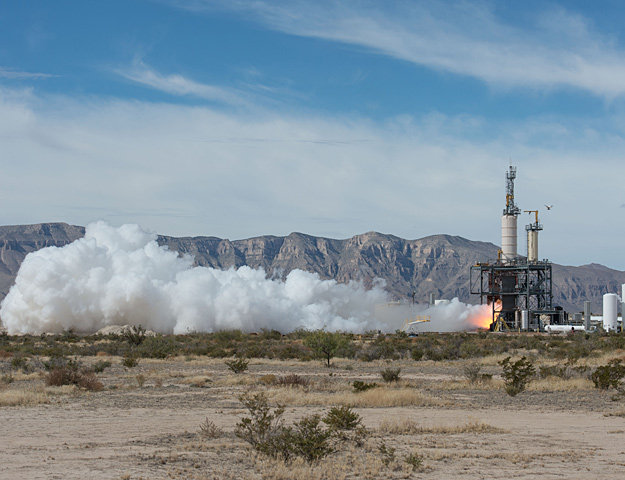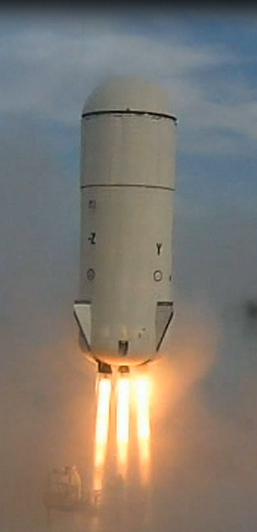December 5, 2013 – You have to admire Jeff Bezos for what my culture calls chutzpa. He has been in the headlines twice in the last week. First with a proposal to start shipping goods from Amazon to customers using drones. And second, successfully firing his new Blue Origin rocket engine at the Van Horn, Texas test facility. The latter simulated a suborbital mission.
I really loved the story about Amazon’s idea for drones. Called Octocopters because they have 8 horizontally mounted propellers, Bezos sees using these robotic devices to deliver packages weighing up to 2.3 kilograms (5 pounds) within 30 minutes of placing an order, kinda like your pizza delivery guy. Come to think of it why don’t pizza restaurants do the same thing and cut out the driver. Bezos calls his future service, Prime Air and has posted a video on the Amazon site to show you how it would work.
For Bezos this is great PR because the idea is so fraught with potential problems as to be unsustainable. How would weather effect delivery? Today’s quadricopters don’t handle wind very well. I watched one near my house being demonstrated and as soon as it got above 30 feet in the air wind pushed it off course and destabilized it to the point where it crashed. I suppose eight propellers would be more stable but still it sounds fanciful. And what about someone intercepting the flight, or bird strikes, or hydro lines? Bezos is pulling our chain with this one and getting lots of publicity.
But Blue Origin is another story. Bezos’ space company has been flying under the radar while SpaceX and Orbital Sciences have grabbed recent headlines. But the mid-November rocket engine test of the BE-3 is fairly significant. This liquid hydrogen engine produced 49,900 kilograms (110,000 pounds) of thrust during a 145-second firing. The engine was then cut to simulate sub-orbital coasting and then refired and throttled down to 11,340 kilograms (25,000 pounds) to simulate a controlled landing.
Blue Origin like SpaceX’s Grasshopper intends to develop reusable vertical-takeoff vertical-landing (VTVL) rockets. And according to NASA the BE-3 is the first new liquid-hydrogen rocket engine to be built since NASA produced one for its Delta IV systems. SpaceX uses much easier to handle kerosene as its rocket fuel.
What’s in the future for Blue Origin? They have a prototype rocket system with capsule called New Shepard. The BE-3 will be the engine for this system as it scales up to the size where New Shepard can launch human crews. Today, however, payloads are limited to 22.7 kilograms (50 pounds).
But maybe Bezos is the tortoise to SpaceX’s hare. Blue Origin is one of the companies NASA has designated as part of its program to have commercial carriers deliver both payloads and people to the International Space Station in the future.













